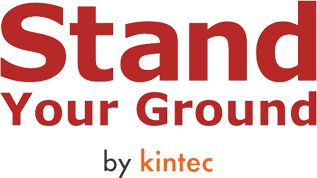Corns and Calluses
Corns and calluses are thick, hardened layers of skin that develop when your skin tries to protect itself against friction and pressure. They most often develop on the bottoms of feet and toes. Corns and calluses can be painful and unsightly. For most people, simply eliminating the source of friction or pressure makes corns and calluses disappear.
Tight or poorly fitting shoes are thought to be the main cause of most corns and calluses. Extra width is needed if corns develop on the outer side of the little toe, or on the top of 'hammer' or 'claw' toes. Modifications to footwear or foot orthotics can also be used to offload high-pressure areas. If you have diabetes or another condition that causes poor blood flow to your feet, you're at greater risk of complications from corns and calluses. Seek your pedorthist’s advice on proper care for corns and calluses if you have such a condition. Corns and calluses are not the same thing.
Corns
- Corns are smaller than calluses and have a hard center surrounded by inflamed skin. Corns tend to develop on parts of your feet that don't bear weight, such as the tops and sides of your toes and even between your toes. They can also be found in weight-bearing areas. Corns can be painful when pressed.
- A corn is a small, typically round, area of skin that has become thickened due to excess pressure. Corns extend into the deeper layers of skin and can be painful.
- Hard corns commonly occur on the top of the smaller toes, or on the outer side of the little toe. These are the areas where poorly fitted shoes tend to rub most.
- Soft corns sometimes form in between the toes, most commonly between the fourth and fifth toes, where sweat keeps them moist.
Five Types of Corns on Feet:
- Hard corns: This type is the most common corn on feet. They can vary in size and are usually found on larger bony prominence areas of the foot. It is normal for hard skin to be present in the area. Hard corns can be uncomfortable to walk on but are very easy to remove.
- Soft corns: This is the second most common corn from the five. They are typically found in between the toes where the skin is soft from sweat or poor drying. Due to the soft nature of the skin the corn can appear rubbery and white. Soft corns can be painful and require treatment immediately.
- Seed corns: Least painful of all five types of corn and one of the easiest corns to remove. Seed corns are formed differently. They are not formed by pressure, they are actually formed by dry skin. The dry skin folds in upon itself creating seed corns. Because they are formed when dry skin is present they can be found anywhere around the foot. Can be found singularly or in a cluster.
- Fibrous corn: Typically found in between the toes in where the skin is soft from sweat or poor drying. Due to the soft nature of the skin the corn can appear rubbery and white. Soft corns can be painful and require treatment immediately. Fibrous corns require patience and gentle approach for a good thorough removal.
- Vascular corns: As the name would suggest these corns have a good supply of blood. They usually occur on the toes or soles of the feet (plantar corns), almost always over a bony prominence, such as a joint. A corn is simply an excess of skin cells in one spot due to pressure or friction on that part of the foot whereas a callus develops over a larger area of the foot.
Calluses
- Calluses are rarely painful. They usually develop on the soles of your feet, especially under the heels or balls of the feet. Calluses vary in size and shape and are often larger than corns.
- A callus is larger and broader than a corn and has a less well-defined edge.
- They tend to form on the underside of the foot, particularly the bony area just underneath the toes, and the heels because these are the high-pressure areas when walking and running.
- Calluses are usually painless but can crack and become painful
Most corns and calluses gradually go away when the friction or pressure causing them stops. If you are experiencing foot pain or discomfort, you should talk to your doctor or book an appointment with a Canadian Certified Pedorthist for pedorthic management including:
- Foot and lower limb exam
- Recommendation of orhopaedic footwear selection and guidance
- Custom-made foot orthotic or over-the-counter device
- Modification of footwear
- Toe spacers or padding

